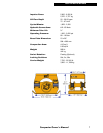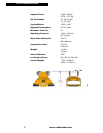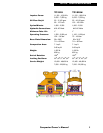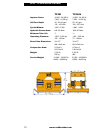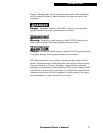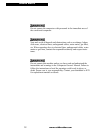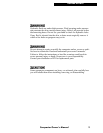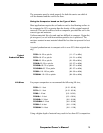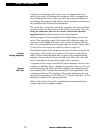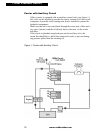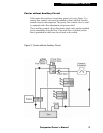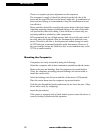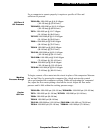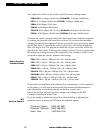
15
Compactor Owner’s Manual
The compactor must be sized properly for both the carrier on which it
will be mounted and the work to be done.
Sizing the Compactor based on the Type of Work
Most applications require the soil under a road or load bearing surface to
be compacted to 95% or greater than the density of the original material
removed. This can be achieved with a compactor, provided the soil is the
correct type and moisture.
Uniform materials like clay and sand are difficult to compact. Virgin dirt,
pit run gravel, or soil with non-uniform particle size is preferred. The
moisture content in most material should be less than ten percent for best
results.
A typical production rate to compact soils to over 95% their original den-
sity;
TC51: 14- 22 cu yds /hr (11 - 17 cu M/hr)
TC71: 18- 27 cu yds /hr (14 - 21 cu M/hr)
TC80: 23- 32 cu yds /hr (18 - 25 cu M/hr)
TC91S: 25- 35 cu yds /hr (19 - 27 cu M/hr)
TC151S: 65- 75 cu yds/hr (50 - 57 cu M/hr)
TC151SH: 65- 75 cu yds/hr (50 - 57 cu M/hr)
TC301: 110- 130 cu yds/hr (84 - 99 cu M/hr)
TC301H: 110- 130 cu yds/hr (84 - 99 cu M/hr)
For proper compaction we recommend the following lift size;
TC51: .5- 1 foot (0.15 - 0.3 M)
TC71: .5- 1 foot (0.15 - 0.3 M)
TC80: 1- 2 foot (0.3 - 0.6 M)
TC91S: 1- 2 foot (0.3 - 0.6 M)
TC151S: 2- 3 foot (0.6 - 0.9 M)
TC151SH: 2- 3 foot (0.6 - 0.9 M)
TC301: 2- 4 foot (0.6 - 1.2 M)
TC301H: 2- 4 foot (0.6 - 1.2 M)
Using a higher depth of material may result in less than 95% compaction.
Typical
Production Rate
Lift Sizes
SIZING THE COMPACTOR



